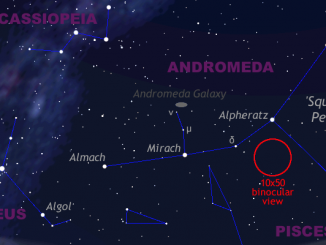
Astronomers at Indiana University recently found that the galaxy AGC 198691 (nicknamed Leoncino, or “little lion”) contains the lowest level of heavy chemical elements, or “metals,” ever observed in a gravitationally bound system of stars.
The study has just appeared in the Astrophysical Journal. The lead author on the paper is Alec S. Hirschauer, a graduate student in the IU Bloomington College of Arts and Sciences’ Department of Astronomy. Other IU authors on the paper are professor John J. Salzer and associate professor Katherine L. Rhode in the Department of Astronomy.
“Finding the most metal-poor galaxy ever is exciting since it could help contribute to a quantitative test of the Big Bang,” Salzer said. “There are relatively few ways to explore conditions at the birth of the universe, but low-metal galaxies are among the most promising.”
This is because the current accepted model of the start of the universe makes clear predictions about the amount of helium and hydrogen present during the Big Bang, and the ratio of these atoms in metal-poor galaxies provides a direct test of the model.
In astronomy, any element other than hydrogen or helium is referred to as a metal. The elemental make-up of metal-poor galaxies is very close to that of the early universe.
To find these low-metal galaxies, however, astronomers must look far from home. Our own Milky Way galaxy is a poor source of data due to the high level of heavier elements created over time by “stellar processing,” in which stars churn out heavier elements through nucleosynthesis and then distribute these atoms back into the galaxy when they explode as supernovae.
“Low metal abundance is essentially a sign that very little stellar activity has taken place compared to most galaxies,” Hirschauer said.
Leoncino is considered a member of the “local universe,” a region of space within about 1 billion light-years from Earth and estimated to contain several million galaxies, of which only a small portion have been catalogued. A galaxy previously recognised to possess the lowest metal abundance was identified in 2005; however, Leoncino has an estimated 29 percent lower metal abundance.



